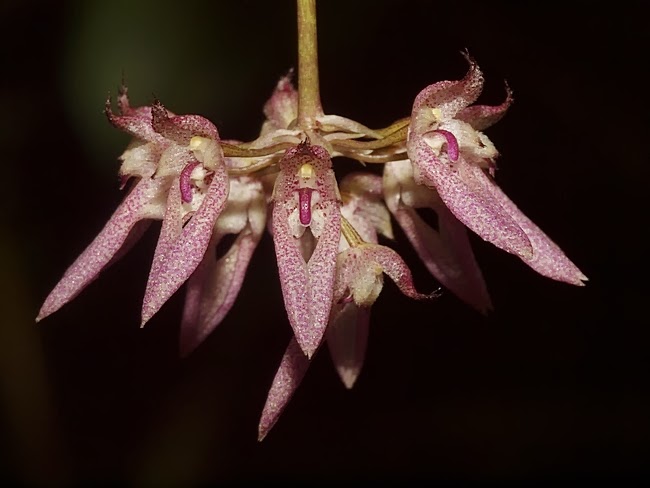Many years ago I salvaged an interesting cutting of Hoya wrapped around a fallen log. The log and its entanglements originated somewhere in the catchment area but was felled and dragged to the existing location - outside a toilet of a public park .... and left to cook under the glare of the tropic sun. An elusive bloom earlier this year verified that it was Hoya scortechinii which is very rare in Singapore, although it could still be found infrequently in other countries. In fact, its occurence on the tiny red dot was only formally documented in 2011. The corolla is usually photographed when it curved backwards but I managed to capture the early moments when it had just opened.
Singapore is in a floristically rich region and many species were rediscovered or recorded for the first time only recently - amongst them Hoyas (H. coronaria 2006 and H. caudata 2012) Gesneriads (Aeschynanthus albidus 2008) and Orchids (Liparis barbata 2010 and Vrydagzynea lancifolia 2014). It is unfortunate we are also in the mist of a dramatic population growth and development phase which will test the resolve to preserve whatever nature there is left.
Vrydagzynea lancifolia
Vrydagzynea lancifolia
.

























 Another cool growing ginger - Camptandra ovata
Another cool growing ginger - Camptandra ovata











